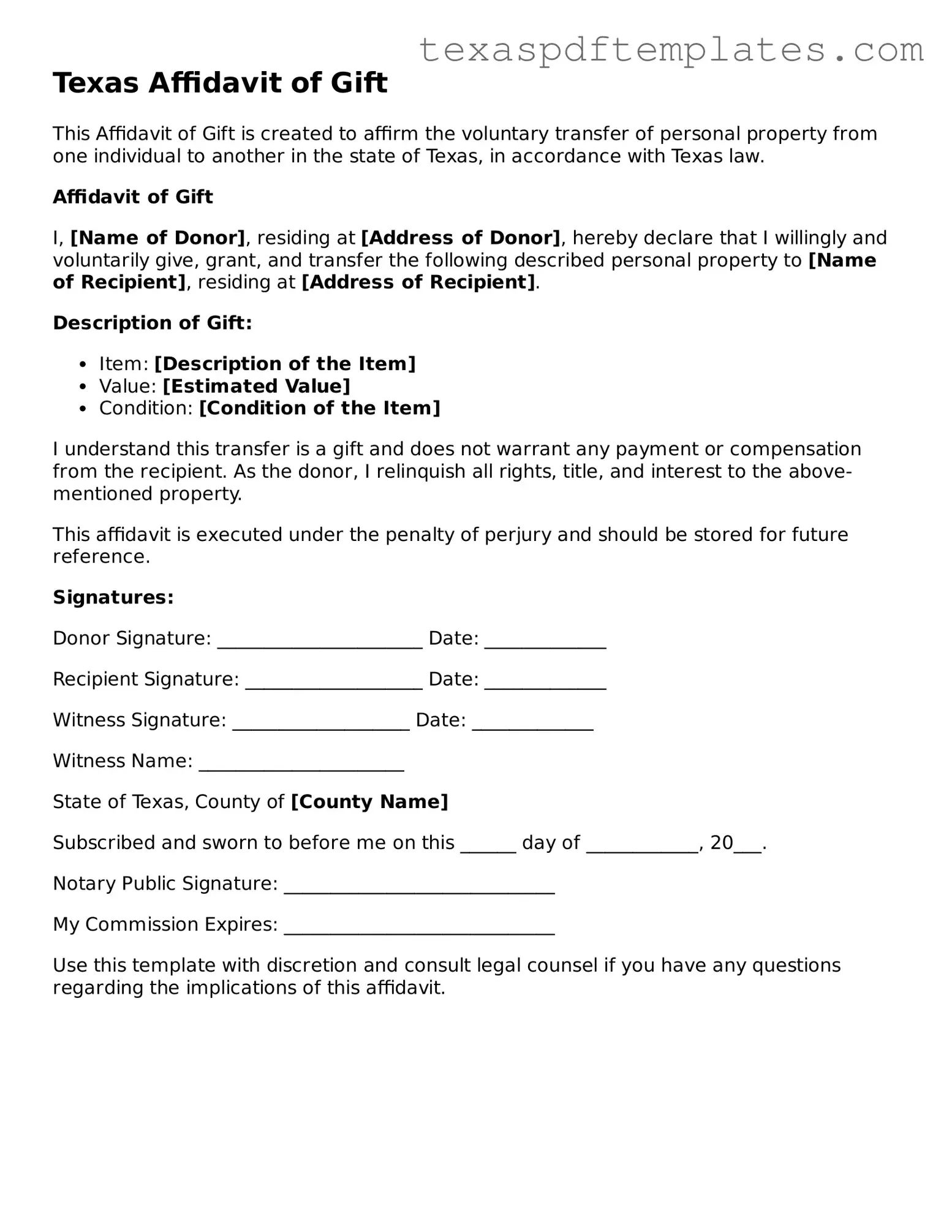Texas Affidavit of Gift
This Affidavit of Gift is created to affirm the voluntary transfer of personal property from one individual to another in the state of Texas, in accordance with Texas law.
Affidavit of Gift
I, [Name of Donor], residing at [Address of Donor], hereby declare that I willingly and voluntarily give, grant, and transfer the following described personal property to [Name of Recipient], residing at [Address of Recipient].
Description of Gift:
- Item: [Description of the Item]
- Value: [Estimated Value]
- Condition: [Condition of the Item]
I understand this transfer is a gift and does not warrant any payment or compensation from the recipient. As the donor, I relinquish all rights, title, and interest to the above-mentioned property.
This affidavit is executed under the penalty of perjury and should be stored for future reference.
Signatures:
Donor Signature: ______________________ Date: _____________
Recipient Signature: ___________________ Date: _____________
Witness Signature: ___________________ Date: _____________
Witness Name: ______________________
State of Texas, County of [County Name]
Subscribed and sworn to before me on this ______ day of ____________, 20___.
Notary Public Signature: _____________________________
My Commission Expires: _____________________________
Use this template with discretion and consult legal counsel if you have any questions regarding the implications of this affidavit.
